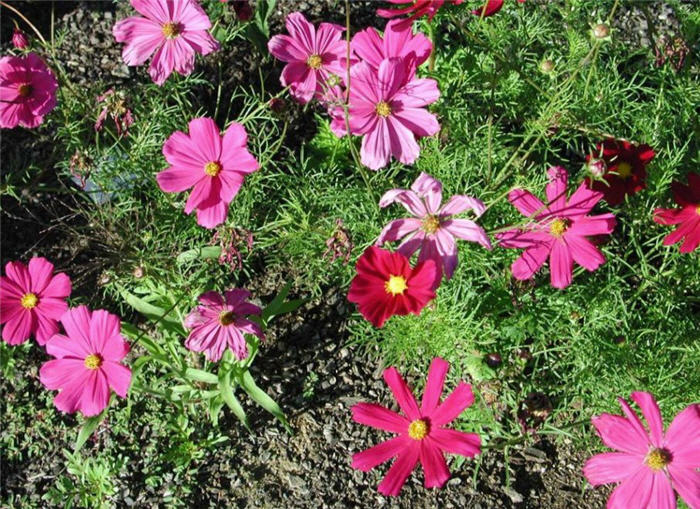| Botanical Name: Cosmos bipinnatus | |
| Common Name: Annual Cosmos |

-
Anatomy
-
Culture
-
Design
Plant Type
Annual
Height Range
1-3'
Flower Color
Lavender, Orange, Pink, Red, Yellow, White, Multi-Colored
Flower Season
Summer, Fall
Leaf Color
Green
Bark Color
n/a
Fruit Color
n/a
Fruit Season
n/a
Sun
Full, Half
Water
Medium
Growth Rate
Fast
Soil Type
Sandy, Clay, Loam, Rocky, Unparticular
Soil Condition
Average, Rich, Poor, Well-drained, Dry
Soil pH
Neutral
Adverse Factors
Attracts Bees
Design Styles
English Cottage, Meadow, Mediterranean, Ranch, Seascape, Woodland
Accenting Features
Showy Flowers
Seasonal Interest
Summer, Fall
Location Uses
Entry, Perennial Border, Patio, Raised Planter, Walkways
Special Uses
Container, Cut Flowers, Filler, Mass Planting
Attracts Wildlife
Butterflies
Information by: Stephanie Duer
Photographer: Steve Mullany
Photographer: Steve Mullany
-
Description
-
Notes
Cosmos is a colorful annual with bright, daisy-like flowers a variety of pink and lavender shades, as well as white and yellow. Some forms are simple, single petaled, while some have double petals or tube-like petals. Depending on the cultivar, they grow about 2 to 3 feet tall and half as wide. Deadheading will encourage more blooms; but cutting them early for vases is better still. Foliage is ferny and is great for filling in voids in the garden. Cosmos will self-sow if happy with its location. It prefers full sun and well-draining soil.
Cosmos will grow in nearly any soil, as long as it drains well. This is a tough annual. Over-watering, over-fertilizing, or too much shade will make them lanky, with fewer flowers, and probably result in powdery mildew. Cut back as flower volume begins to diminish, as you'll be rewarded with new growth and new flowers. See guide for tips on starting annuals by seed.